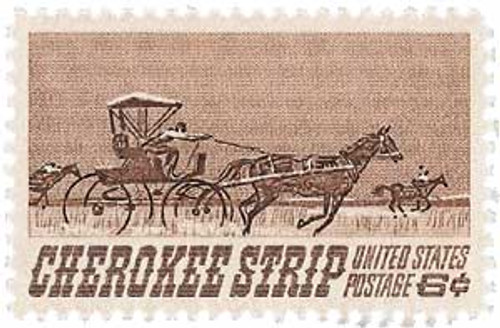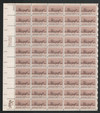
1968 6c Cherokee Strip
# 1360 - 1968 6c Cherokee Strip
$0.35 - $27.50
Issue Date: October 15, 1968
City: Ponca, OK
Quantity: 124,775,000
Printed By: Bureau of Engraving and Printing
Printing Method: Rotary Press
Perforations: 11 x 10 1/2
Color: Brown
At noon, on September 16, 1893, 100,000 settlers raced to claim one of 42,000 parcels of land along the Cherokee Strip. This race was the last great land run held in the United States.
Issue Date: October 15, 1968
City: Ponca, OK
Quantity: 124,775,000
Printed By: Bureau of Engraving and Printing
Printing Method: Rotary Press
Perforations: 11 x 10 1/2
Color: Brown
At noon, on September 16, 1893, 100,000 settlers raced to claim one of 42,000 parcels of land along the Cherokee Strip. This race was the last great land run held in the United States.










